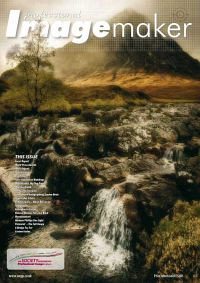articles/Lighting/lightingfordigitalpart14-page1
Lighting for Digital Part 14 - part 1 of 1 2 3
by Dave Montizambert Published 01/04/2010

My clients are always making crazy requests, especially since digital. They frequently ask for summer fashion catalogues with outdoor themes shot in the dead of winter in the Northern Hemisphere, and they always pick the rainiest or snowiest days to shoot on. I touched on this with my article 'Lighting for Digital Part 9' back in the April/May 2009 issue of this magazine; it demonstrated how to create a sunlit look on a cloudy day in Hawaii using only one speedlight and a reflector panel. This simulated sunlight technique is great but doesn't work very well if you have wind-driven torrents of rain or a howling snow storm (such as in Hammersmith, England this past January at the Convention 2010). In cases like this you can use the same lighting technique indoors, but unless the shoot has a decent budget, realistic looking backgrounds will be out of the question leaving you with fake looking ones.
This is where Photoshop shines, you can delete the original backdrop then drop in the perfect background after the fact. Easy, or so everyone thinks, but the reality is, a seamless job is quite time consuming and therefore expensive for the client. Cutting around flesh and most garments is easy and can be somewhat automated, the real challenge is hair, cutting around it is a very tedious time consuming task because of its size and its translucent quality. Simply put, the background will partially show through any given strand of hair and will be viewed as a contaminant once a different coloured/ toned background scene is added. To make things even more challenging, a strand of hair's smooth surface creates a very efficient reflecting surface which picks up original background colour and tone. Strands of hair are also very thin, the edge pixels of these strands can mush together with the original background when imaged if the lens and/or imaging sensor's resolving power is not adequate; this looks perfectly fine and natural against the original background but does not against a new background. After being frustrated with these challenges, I found a wonderful fast solution using blending modes to blend the hair into a new background which works beautifully most of the time if you light the edges of the hair correctly and carefully choose an appropriate background for the original shot. An appropriate background can only be determined once you know what the final background tone around the subject's hair will be.
You are currently on page 1
- Lighting for Digital Part 14 page 1
- Lighting for Digital Part 14 page 2
- Lighting for Digital Part 14 page 3
1st Published 01/04/2010
last update 09/12/2022 14:55:50
More Lighting Articles
There are 16 days to get ready for The Society of Photographers Convention and Trade Show at The Novotel London West, Hammersmith ...
which starts on Wednesday 14th January 2026





